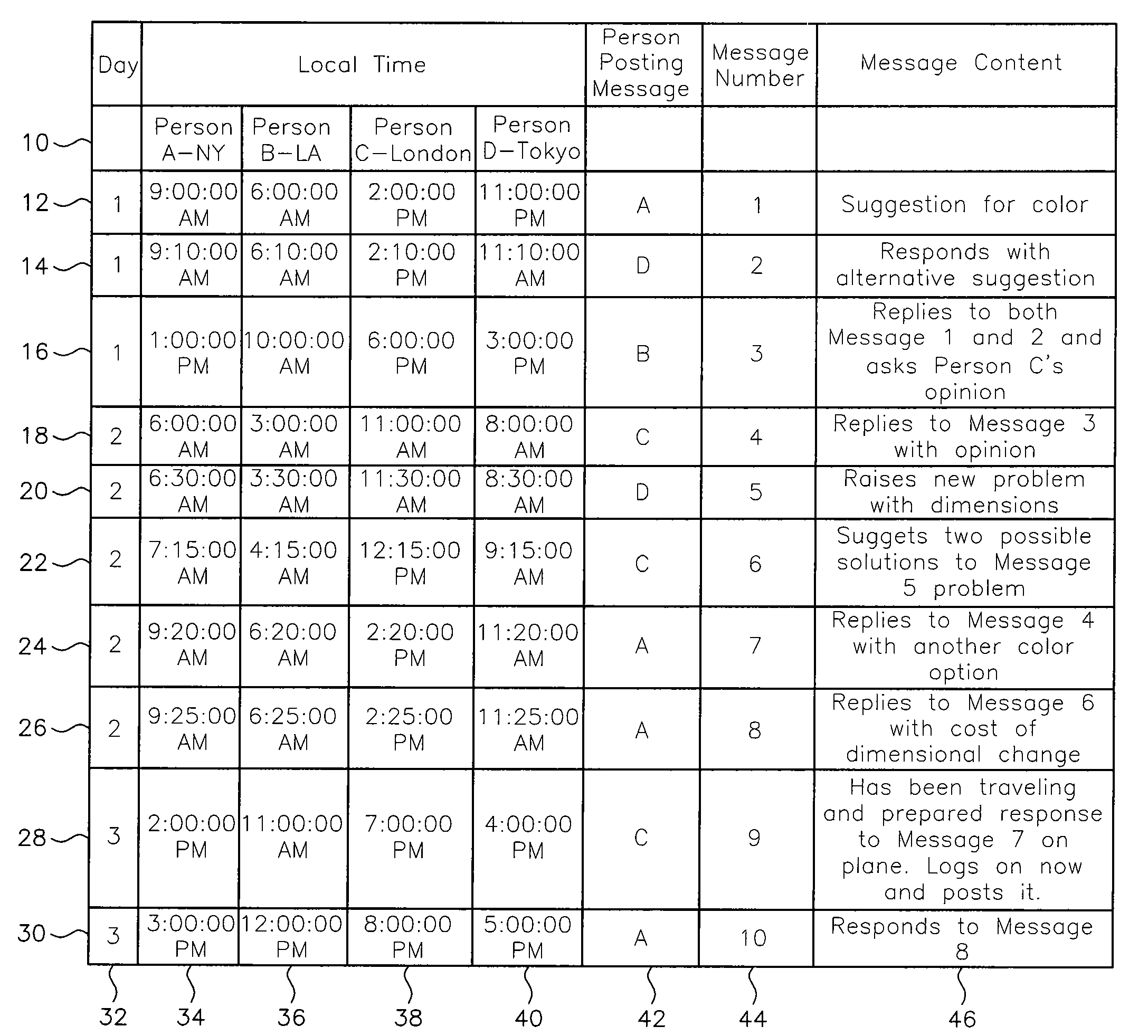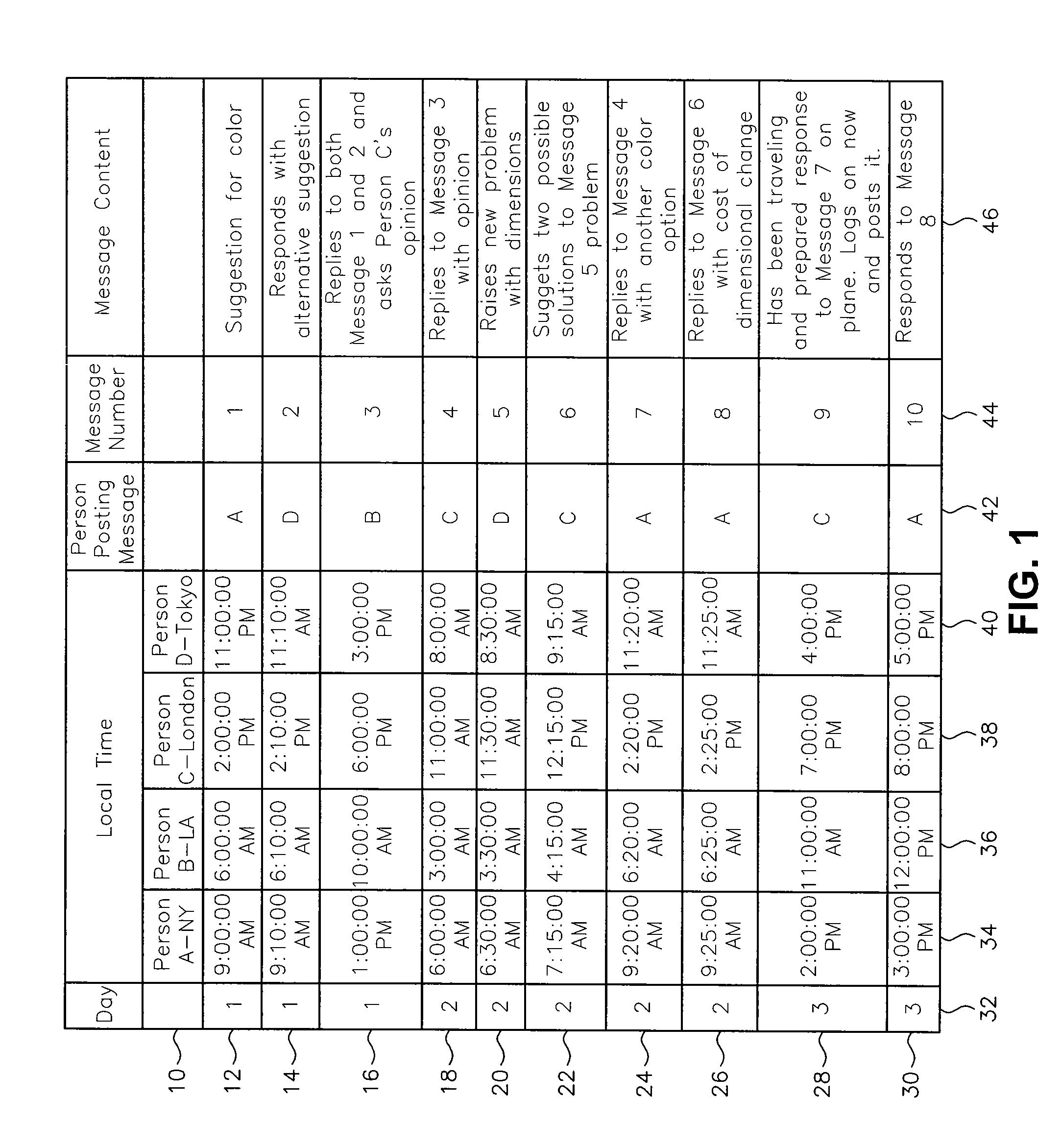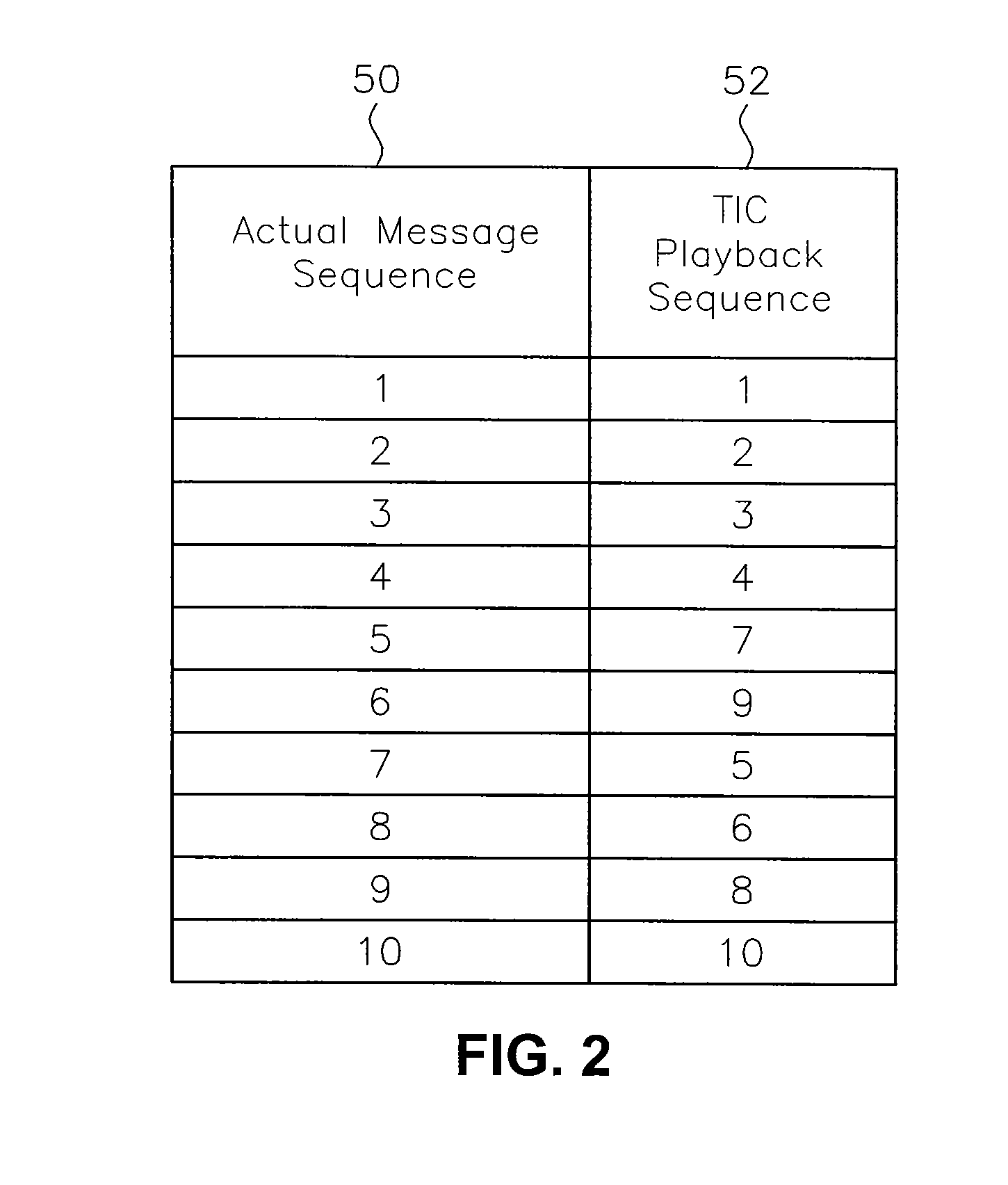Asynchronous network audio/visual collaboration system
a technology of asynchronous network and audio/visual collaboration, applied in the field of communication networks, can solve the problems of inability to merge, limit the asynchronous interaction, and the complexity of which medium to select for a particular interaction,
- Summary
- Abstract
- Description
- Claims
- Application Information
AI Technical Summary
Benefits of technology
Problems solved by technology
Method used
Image
Examples
Embodiment Construction
[0101]Although the invention is illustrated and described in this document with reference to specific embodiments, the invention is not intended to be limited to the details shown. Rather, various modifications may be made in the details within the scope and range of equivalents of the claims and without departing from the invention. For example, the description of the invention and the figures illustrating the invention relate to manipulating audio / video (A / V) messages. It will be understood that the methods and systems described in this document may also be used with other kinds of messages.
[0102]The present invention is a time-independent collaboration (TIC) system. The term “collaboration” can be defined as an activity in which one or more participants or services share information or points-of-view with an intent of reaching a decision, making a choice, or sharing knowledge.
[0103]An exemplary embodiment of the present invention is a TIC system and method that provides the platf...
PUM
 Login to View More
Login to View More Abstract
Description
Claims
Application Information
 Login to View More
Login to View More - R&D
- Intellectual Property
- Life Sciences
- Materials
- Tech Scout
- Unparalleled Data Quality
- Higher Quality Content
- 60% Fewer Hallucinations
Browse by: Latest US Patents, China's latest patents, Technical Efficacy Thesaurus, Application Domain, Technology Topic, Popular Technical Reports.
© 2025 PatSnap. All rights reserved.Legal|Privacy policy|Modern Slavery Act Transparency Statement|Sitemap|About US| Contact US: help@patsnap.com



